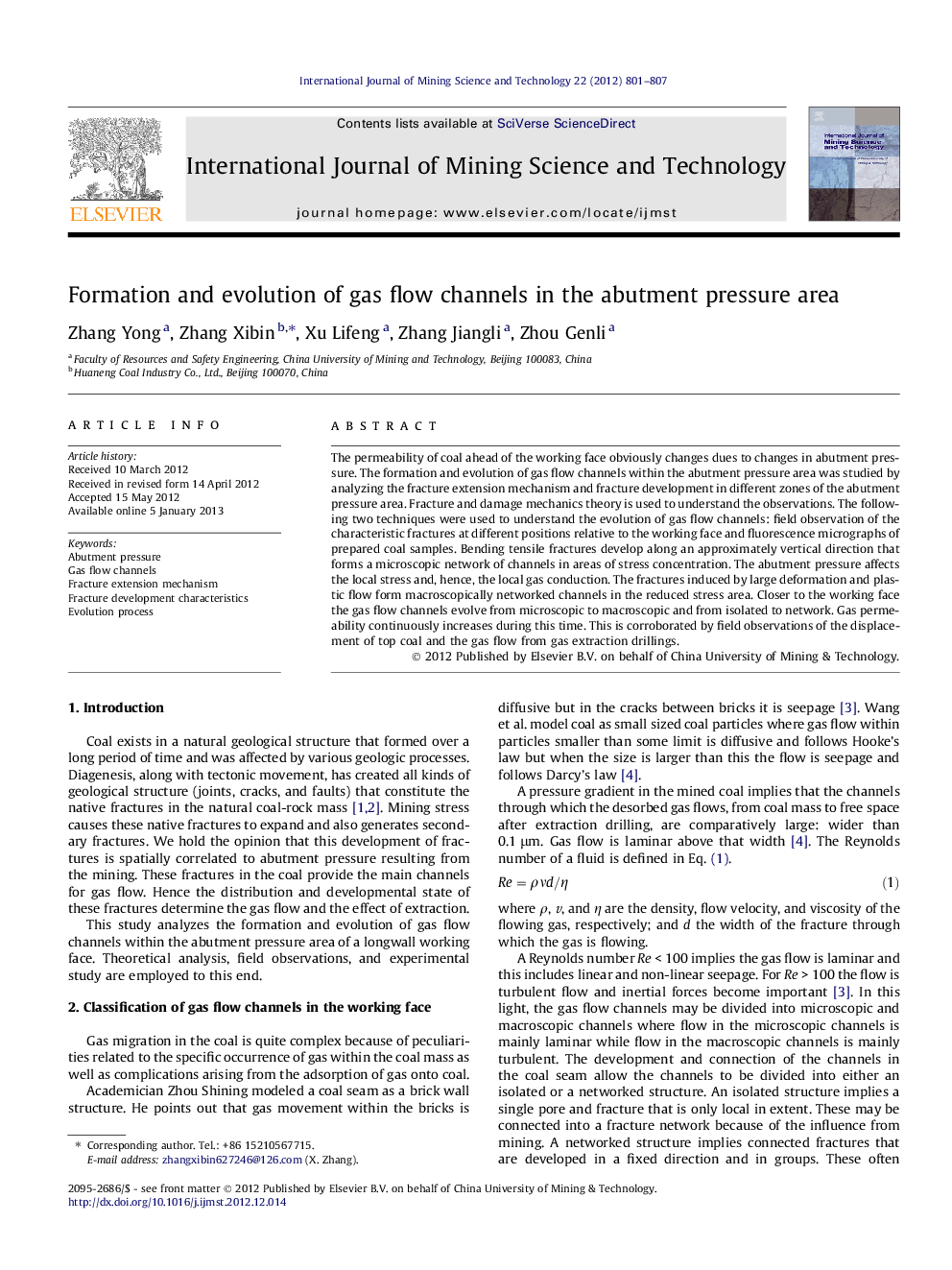| Article ID | Journal | Published Year | Pages | File Type |
|---|---|---|---|---|
| 275327 | International Journal of Mining Science and Technology | 2012 | 7 Pages |
The permeability of coal ahead of the working face obviously changes dues to changes in abutment pressure. The formation and evolution of gas flow channels within the abutment pressure area was studied by analyzing the fracture extension mechanism and fracture development in different zones of the abutment pressure area. Fracture and damage mechanics theory is used to understand the observations. The following two techniques were used to understand the evolution of gas flow channels: field observation of the characteristic fractures at different positions relative to the working face and fluorescence micrographs of prepared coal samples. Bending tensile fractures develop along an approximately vertical direction that forms a microscopic network of channels in areas of stress concentration. The abutment pressure affects the local stress and, hence, the local gas conduction. The fractures induced by large deformation and plastic flow form macroscopically networked channels in the reduced stress area. Closer to the working face the gas flow channels evolve from microscopic to macroscopic and from isolated to network. Gas permeability continuously increases during this time. This is corroborated by field observations of the displacement of top coal and the gas flow from gas extraction drillings.
